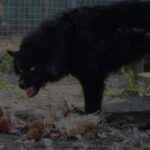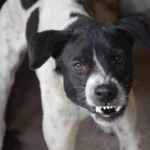



Identifying and handling aggressive dogs
AGGRESSION takes on many forms in dog world. As with people, in order to manage aggression, one must first identify the root behind the hostile behavior of the subject. Some dogs are only aggressive toward other dogs, while many can become aggressive toward certain sexes of people or people in general. Some dogs are only aggressive around food.
YOU CANNOT CONTROL THE ISSUE UNTIL YOU IDENTIFY THE CAUSE.
In my extensive experience spanning over two decades training canines, I have come to witness many dogs who should be treated as if they were a weapon. Aggressive dogs are no laughing matter, regardless of stature. It is only a matter of time before another dog or human life is injured… or worse..
Fortunately, in all these years, I have only witnessed two dogs who were subject to being “put down.” I’m sorry if this makes people sad or uncomfortable, but it is a reality many dog professionals do not share. It does happen. This occurs only after many hours of training by professional dog handlers skilled in aggression, and a scope of veterinarians over-viewing the behaviors of the animal. After extensive training and research it is determined the dog is, for whatever the unexplained reason, a tremendous danger to society and the vet makes the final decision to put the dog down. In no way is this ever a good feeling. I am skilled with dogs, even aggressive dogs, and I work with dogs because I LOVE THEM, not because I wish them harm. However, any individual choosing a dog over a human life is not of the Lakeside Dog Trainer mindset and in all honesty, we would probably not work well together. As I stated, this has only occurred twice in the thousands of dogs that have come across my training in all these years. As a father, I share this with you as I want everyone to be acutely aware of the risks involved with keeping an aggressive dog, especially one who has an owner who is incapable of handling him. There are dogs who need skilled management and should never be trusted around vulnerable individuals. Safety for your children is paramount.
So where does your aggressive dog fit in?
🐾 Fear-Based Aggression (Also Called Defensive or Avoidance-Motivated Aggression)
Not all aggression comes from dominance or defiance. Sometimes, a dog growls or snaps because they’re overwhelmed—scared of what might happen next. Fear-based aggression is one of the most misunderstood types of behavior, and it often shows up when a dog feels trapped, unsafe, or unsure how to cope. Dogs with fear aggression aren’t “bad dogs”—they’re dogs in distress, doing their best to protect themselves from a world that feels too loud, too close, or too unfamiliar.

🐾 Some paw prints are harder to follow—but no less worthy of the journey. Every dog deserves the chance to feel safe, understood, and deeply loved.
🐾 Common Signs:
Avoidance or hiding followed by sudden defensive outbursts
Stiff body language, tucked tail, pinned ears, lip licking, or trembling
Growling, snarling, or snapping when approached during rest or stress
🐾 What Causes It:
Lack of socialization during key puppy development stages
Chronic anxiety or nervous system dysregulation
Inconsistent handling or past trauma
Pain or undiagnosed medical conditions
🐾 What We Focus On:
Building trust and predictable routines to reduce fear
Teaching safe alternatives through positive reinforcement
Helping families understand canine body language
Reducing exposure to triggers while supporting emotional recovery
It shouldn’t be surprising that dogs have recall to specific smells. Think about humans. We associate smells with certain time periods in our lives. Dogs have up to 300 million olfactory receptors in their brain compared to our 6 million. This means their smell is intensified up to 50 times of humans. This is why we must be careful with what essential oils we use around them. Research claims dogs can smell adrenaline. That’s right. Dogs aren’t looking at your face to see it, they smell your fear.
Additionally, dogs are the same as people in the fact they can become startled. Children must be taught from the beginning, never touch a sleeping dog. Some dogs are only aggressive or fear reactive around their food. Dogs can even suffer with anxiety and/or frustration. The first thing we must do is identify the why behind their reactive behavior.
And last, there are also owners who have “trained” their dog with punishment that borders, (or has been), abusive toward the animal. Lakeside Dog Trainer is not in agreement with using measures such as hitting, beating, throwing a dog outside in the heat or cold, not leaving water out, etc. as a means of training. HOWEVER, remember the part where I said, “We Train The OWNERS.” Perhaps you have acted out of frustration and not treated your dog appropriately. WE ARE HERE TO HELP, not criticize.
Our goal is to ensure your dog has a life filled with value and love. Call us today. This is a judgment free zone. Let’s work on correcting inappropriate responses to their bad behavior. You obviously care about the dog or you wouldn’t be seeking help.
Daniel~




